

Last week we were busy again for our clients. One of our potential clients called. The issue? Supplying manure drying systems to poultry farms. So we got to work.
The customer told me that in autumn and winter it is very important to get your best dry compost because dry manure weighs less. And that, of course, reduces costs.
How does this customer dry the compost? By using centrifugal fans. He uses the fans to blow air in. After our conversation, this customer was immediately interested in learning more about Slingerland Techniek: centrifugal fans are an important part of this customer’s drying system.
We then had extensive email contact. Including a link to our centrifugal fans. The customer searched through our selection tables and sent me the following message not long after:
Dear Steven,
Thanks for your mail.
Just scrolling through the sheets, I don’t actually come across a 7.5KW centrifugal fan that gives 15,000m3h at 2500 pascal.
Do you know which one I should have then?
The customer could not find the alternative with us. Hmm, how is this possible? That creates a challenge. So I started looking in our tables myself and indeed: I came up with more in the direction of a 15 or 18.5kW model. I then made a friendly email explaining why this is absolutely impossible.
Hello Sir,
I have studied you request for a while, but I think this is indeed impossible. If someone else can supply you with these fans though, I would like to order 10 of them as well. Because these fans are so efficient that they generate power. To determine the return of a centrifugal fan we need to look at the following:
Absorbed power you calculate with the following formula:
Air volume x total pressure : 3600 : (efficiency x 10) = power consumption.
If I fill this in with the air and pressure data you provide and with the assumption that this fan has 87% efficiency I come up with the following data:
15000 m3/h x 2500 Pa :3600: 870 = 11.97 kW….
So with a fan that has 87% efficiency you have 11.97kW of power consumption.
Now if I enter the same formula with 110% efficiency (practically impossible because then the machine is actually generating energy) I get the following data:
15000 m3/h x 2500 Pa :3600: 1100 = 9.46 kW….
So even with this efficiency you won’t make it below 7.5kW.
With this explanation, the client was of course willing to send me the curves of the competition. Very nice! After studying the curves, I noticed that the numbers were slightly different. In the curves there were the following numbers:
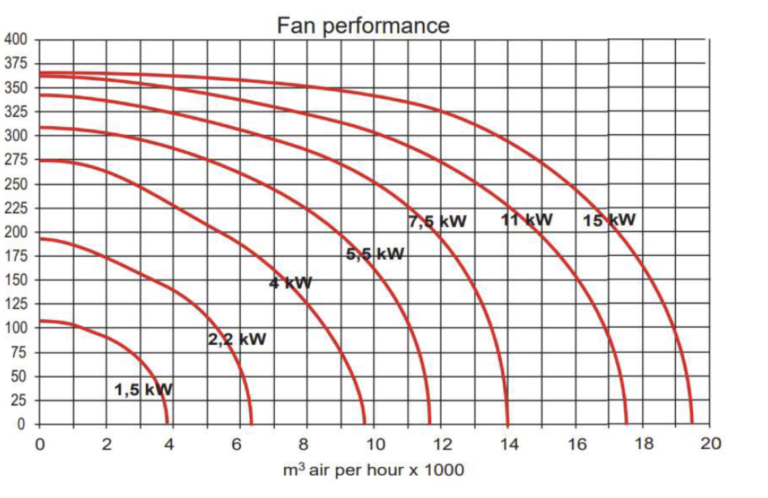
So in this I saw that it is about 12,000 m3/h at just under 200 mm wg.
12,000 m3/h x 1900 Pa :3600: 870 = 7.2kW
That comes down to a pretty efficient fan. But I still don’t actually know if they are talking about dynamic pressure or total pressure. So I started looking some more and finally found drawings of the fan. This fan has an inlet of 285mm.
If you suck in 11,000 m3/h through this inlet you have a speed of 55 meters per second and a pressure loss of 1800 Pa. So there is almost nothing left for your system. So it is very likely that this fan has its operating point somewhere on the left side of the curve.
Would you like to know more about the operating point of your fan? Contact us today!

Industrial fans contribute to a healthy working environment and are capable of moving large volumes of air at high negative pressures. Fans are used worldwide and are subject to international standards. These requirements are mainly focused on safety, energy use and fan performance. Our customer has very high demands, especially on safety.
In this case the customer designed an installation to dry fibers and needed 140,000 m3/h of air. The temperatures could vary between – 10°C and + 150°C. In addition, they had to be able to build up a pressure of at least 6100 pascals. To guarantee the service life of the fans, they also had to meet very specific coating requirements.
The fans are suitable for placement in an EX zone 22. The construction of the fans is extra reinforced to be able to run at high speeds. Up to 1670 rpm can be rotated. Our fans are equipped with an EX speed sensor to detect and limit the speed of the impeller. The impellers are equipped with counter blades to create under pressure at the shaft passage and also equipped with a graphite shaft seal.
The fans are constructed with a special housing division so that complete dismantling of the piping is not required during service interventions or when dismantling the fan. These fans are no less than 4.1 meters long, 2.7 meters high and 3.5 meters wide.
These very robust fans are equipped with an EX motor 400kW of the brand WEG including thermal protection PTC, insulated bearing shield NDE. The aforementioned fiber drying industrial fans were cleaned and degreased and then blasted. A first primer with Intergard 251 and then a 2 component coating Interthane 990. Mechanical guarantees had to be given about the welds and the strength of the impeller. We also provided the following reports: balance report, IFM sensor test, IIA conformity statement, data sheet of the coating including test report of layer thicknesses, FAT report, maximum speed test, installation and maintenance manual.
In short, a beautiful piece of craftsmanship!
Read also: “Why you should buy an industrial fan”
Slingerland Fans understands that it is difficult for companies to indicate exactly what they are looking for. In order to provide companies with the best possible service, we look at the business situation together. Then the possible solutions are discussed so that we can solve your business problem in full consultation.
If you have any questions, we will be happy to help you. You can reach us on +31 (0)33 465 13 92 or by taking a look at our contact page below.

Dust nuisance is a common problem in industry. In recent years, air quality has been the subject of more and more discussion. Since the outbreak of the coronavirus, a great deal of attention has been paid to particulate matter. In addition, we also hear a lot of noise about CO2 in the ambient air due to environmental issues. However, dust problems have been occurring in production environments for much longer.
Because of the increasing awareness and extra attention for dust problems, more and more filter builders have emerged in Europe. Because almost all filter builders innovate and want to build as compact as possible, Slingerland Techniek has come up with a solution for a horizontal version that can be mounted directly in the clean air space of the filter cabinet.
We already provide the fans with a discharge valve with bearing and counterweight. The underframe has been specially developed for easy mounting that is separate from the fan. This is a conscious choice so that first the frame can be easily mounted without the fan getting in the way when mounting. Then the fan can easily be lowered down to the frame. The inlet is completely airtight, making it the only thing that needs to be fitted.
Built-in fans cause significantly less noise nuisance than a separate fan installed next to a filter because the casing of the filter already absorbs a fair amount of noise. If the filter builder provides insulation on top of that on the inside of the filter box, you have a very low-noise system.
In most cases, multiple fans are placed in a filter so that they can be controlled in Cascade. This means that when the installation requires more power, a fan is added. As soon as more suction capacity is needed in the pipes this will be noticed by a pressure sensor. The pressure sensor will then send a signal to the electrical cabinet to switch on an extra fan. In this way a customer can optimally save energy and the installation is easy to assemble. This way, the filter is delivered to the customer ready to use, which simplifies the installation one by one.
You must ensure that each fan has a non-return valve on the outlet. It is important that no air can escape through the fans that are not rotating. This means that when a fan is switched off, the valve on the outlet must close. Slingerland Techniek has come up with some very nice standard solutions for this.
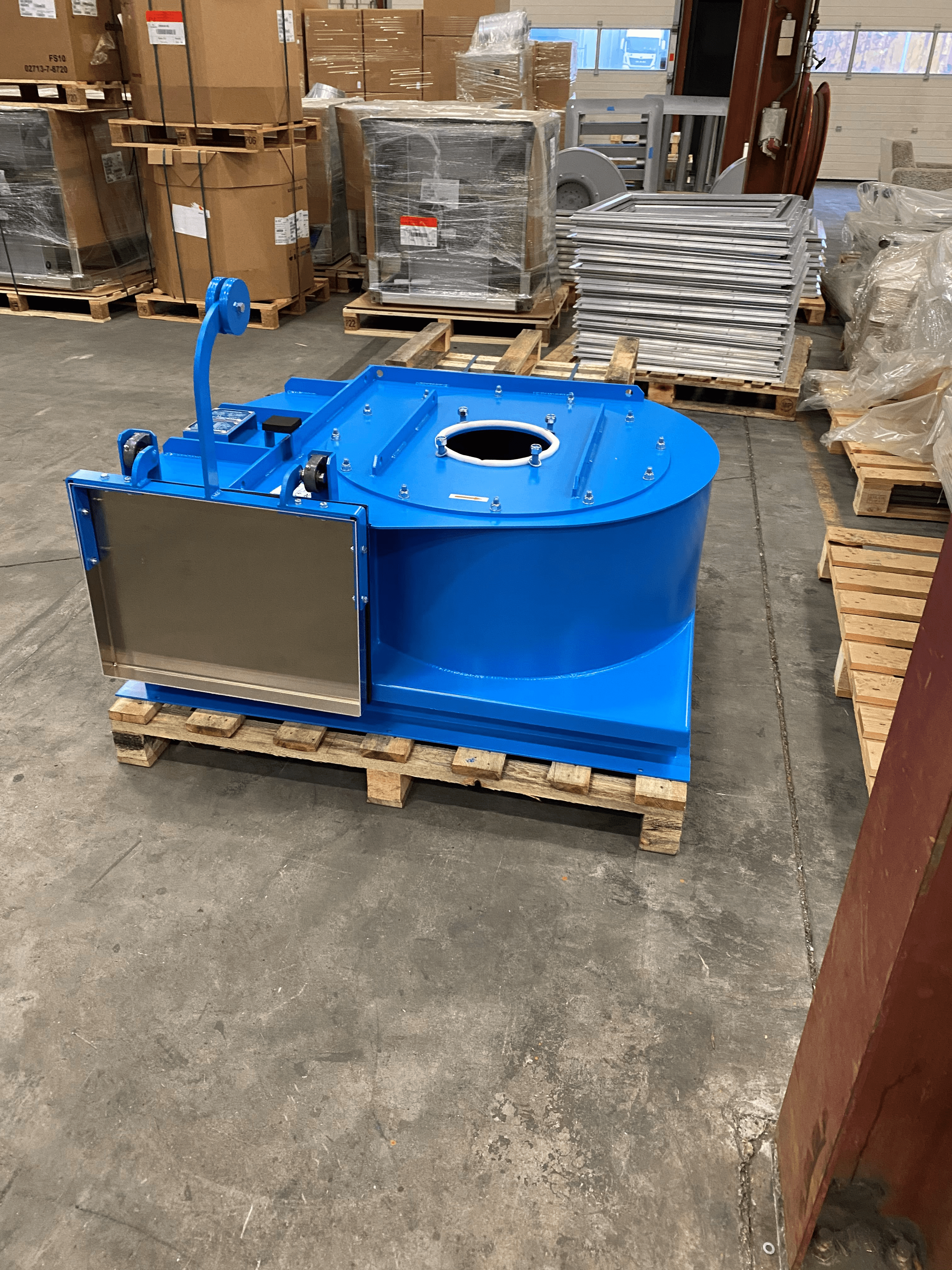
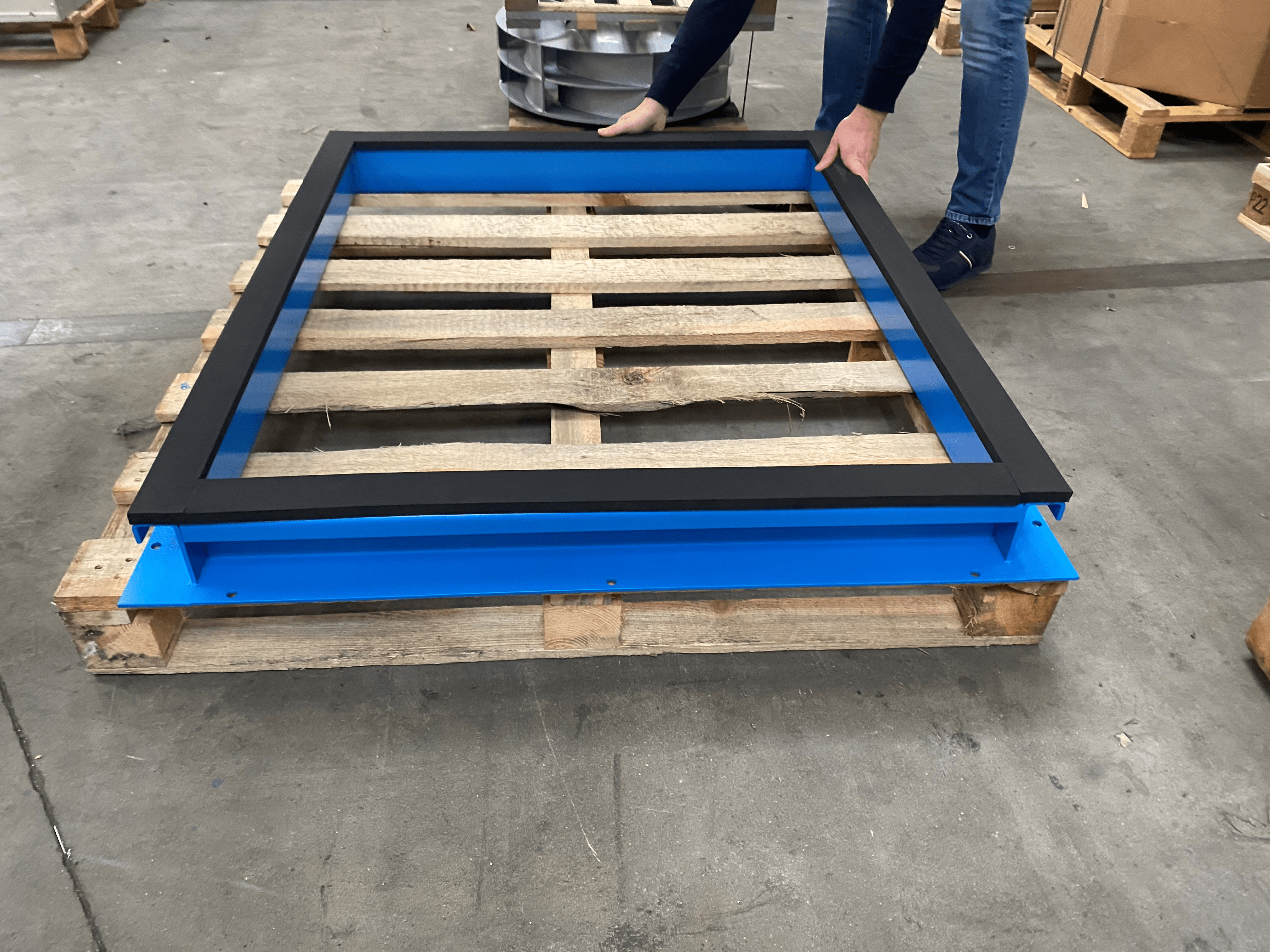
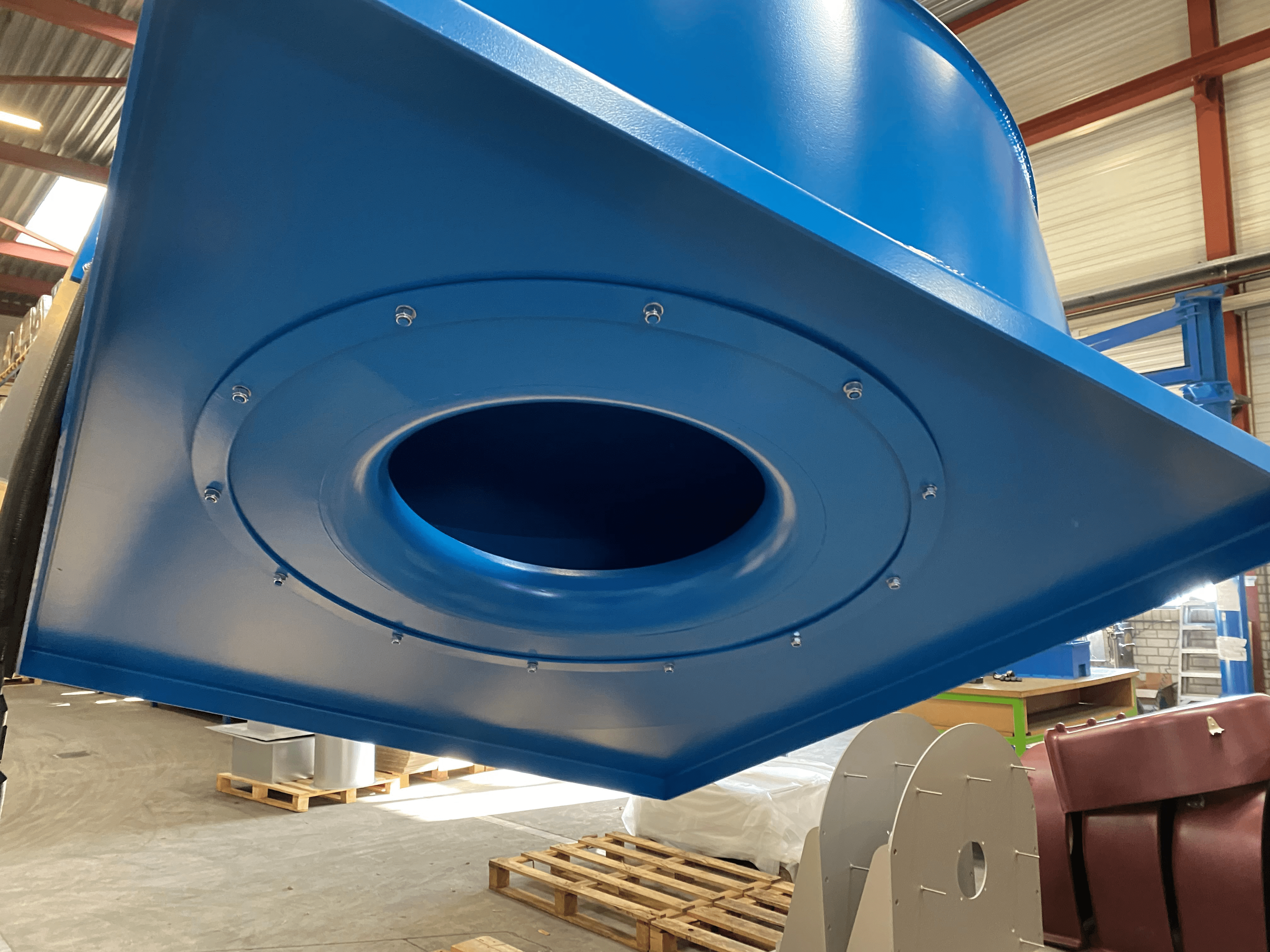
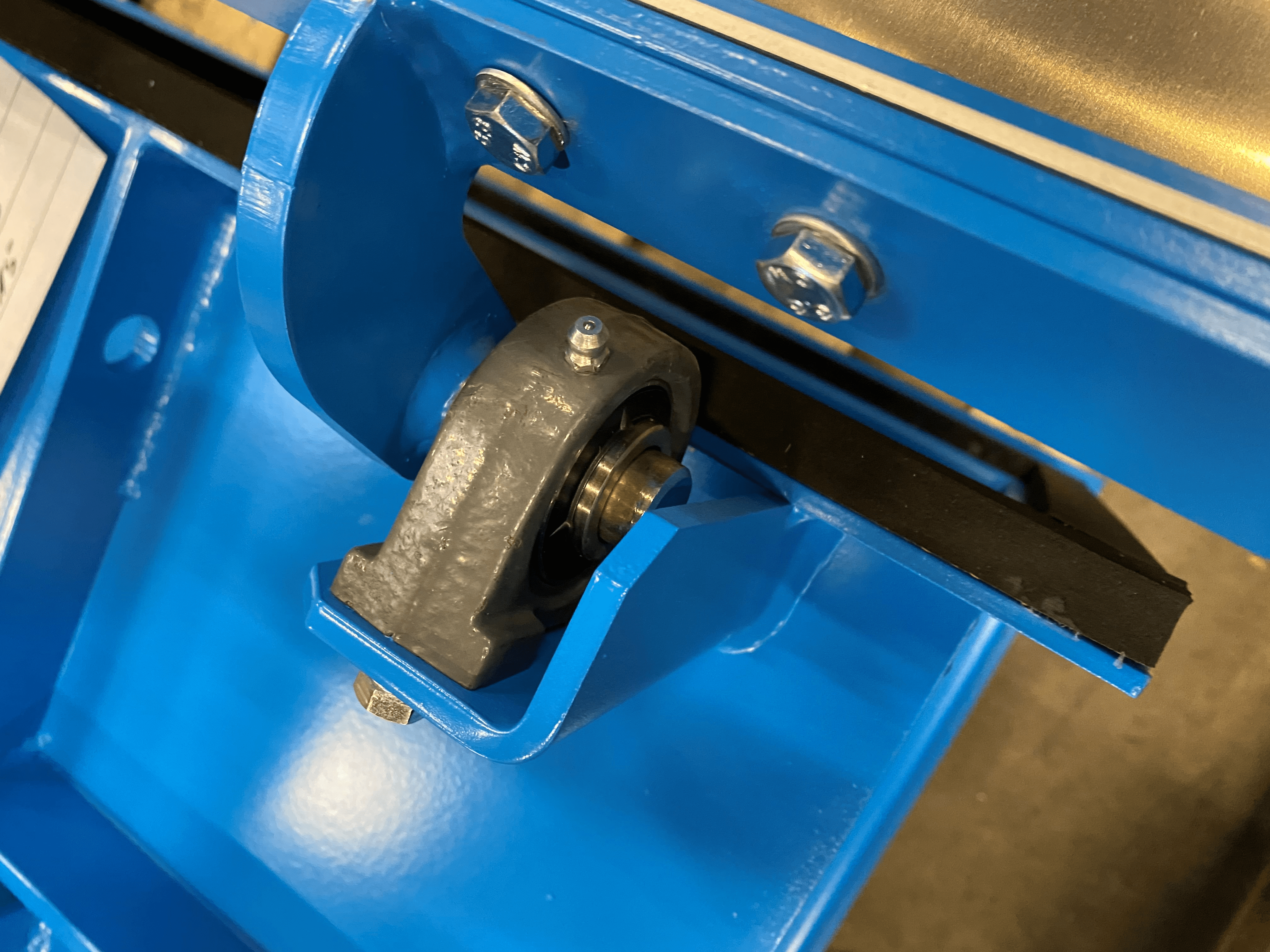
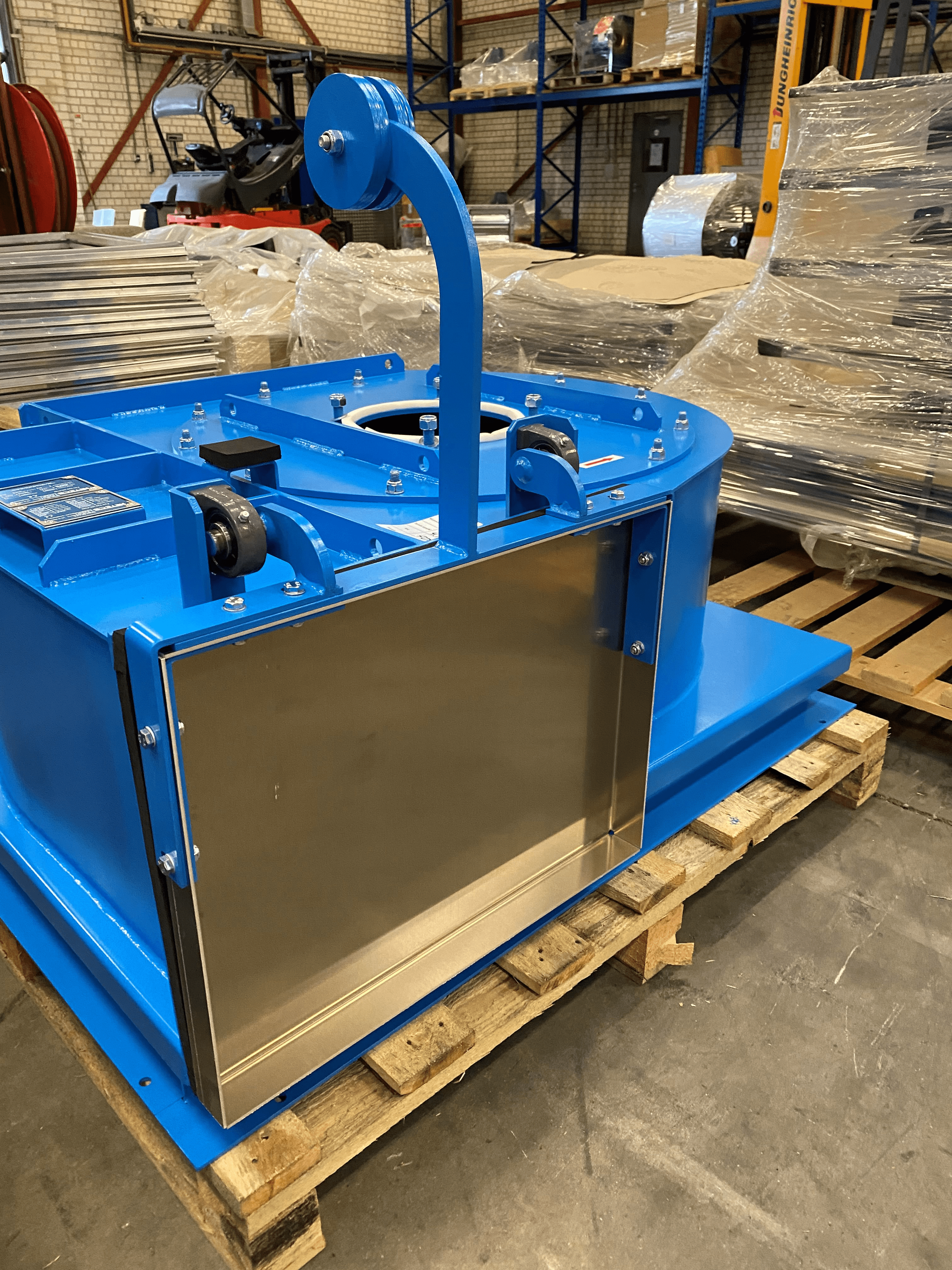
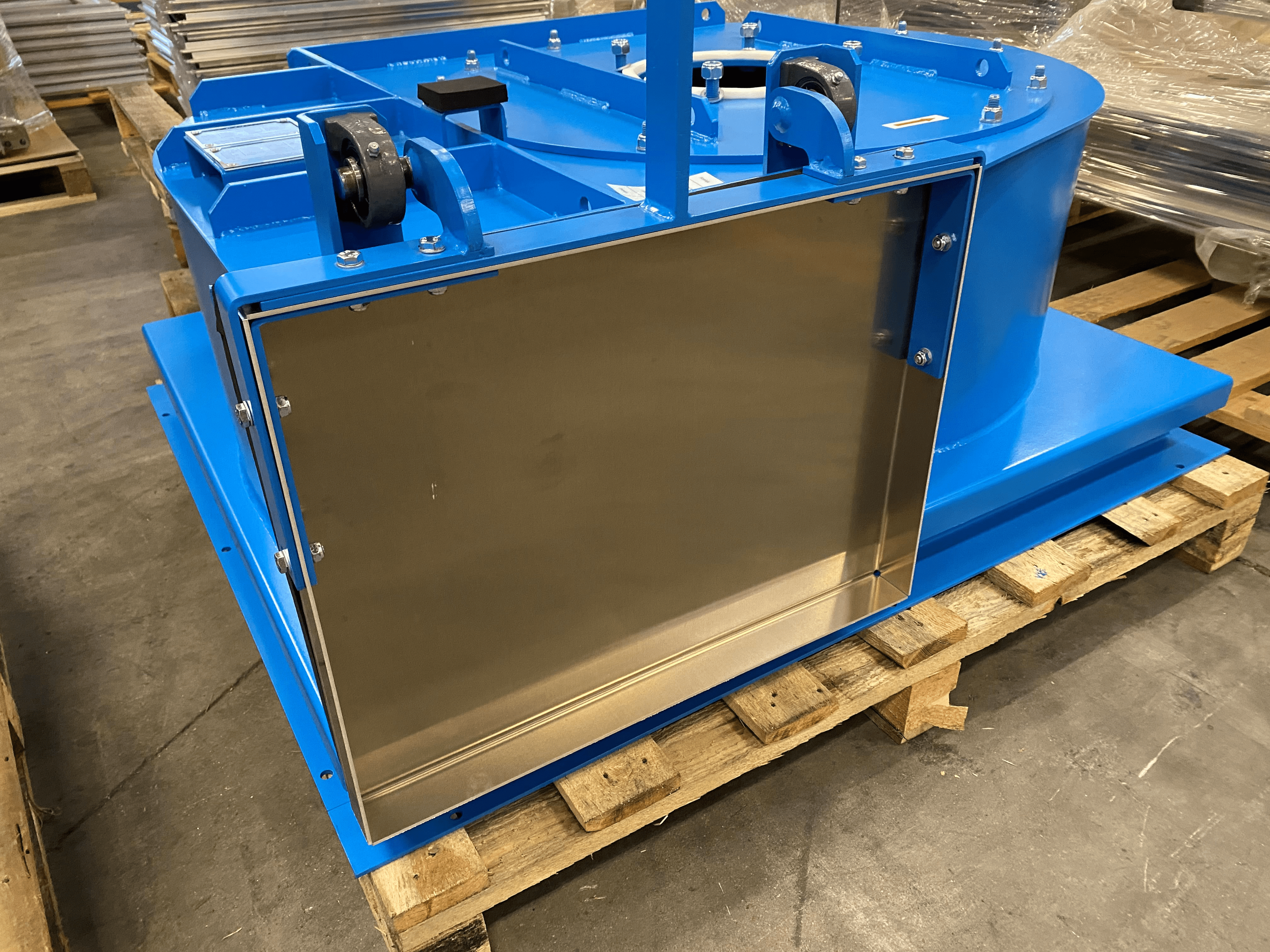
We are happy to help you. Please contact us for free advice on the number +31 (0)33 465 13 92 or go to our contact page below.

Everything that happens online needs a data centers. Data centers are therefore the foundation of our digital economy. This means a stream of data that must be accessible at any time of the day.
A data center is an industrial, high-security building, built with one goal: to ensure that computer servers with digital applications always run, 365 days a year, 7 days a week, 24 hours a day. A malfunction in the data center could, for example, prevent you from paying with your bank card. One of our customer’s greatest features is the flexibility to facilitate any data center design with a green and efficient cooling solution.
Slingerland Techniek provides a tailor-made solution for this customer. We have selected a free-running centrifugal fan with built-in control. These fans are fully assembled and tested in our warehouse before they are shipped around the world. The application of these fans is actually to recirculate conditioned cooling air.
(Click to enlarge)
Sign up for our newsletter to stay informed of our latest news and discount promotions.
Upon registration you will immediately receive a welcome offer!

The milled asphalt that is removed from the roads arrives at the factory and is dumped on a conveyor belt, the material is then dumped into a drum. Hot air is added to the drum, causing the sand and gravel to separate from the tar-containing asphalt, then it goes over hovering machines and the other dust-containing air is extracted via cyclones. Our fan is behind it. In this process, the temperatures in the drum can rise to 700 ° Celsius, so this air had to be extracted by our fan.
We are the only supplier in the Netherlands to offer a fan with the following features that emerged from the test report:
Sign up for our newsletter to stay informed of our latest news and discount promotions.
Upon registration you will immediately receive a welcome offer!

Custom centrifugal fan for the drying installation for the animal food industry
In the past, Slingerland Techniek received a customer request for a fan with very specific requirements, regarding coating, working points, finishing and motor options. After a long tendering process, Slingerland Techniek finally came out on top and we were very happy with the result. We were able to get to work and we’re proud to tell you more about the result.
The customer is in the business of designing and manufacturing advanced, custom-designed drying systems. They were looking for a specific set of fans for a wide range of applications. More specifically, in this case the fans had to be able to be used to dry alfalfa plants. Alfalfa is a special sprout vegetable that is mainly dried artificially in the Netherlands. As the customer is active in the animal food industry, the fans had to meet the most demanding quality requirements.
For this customer, Slingerland Techniek designed 2 customized centrifugal fans. The fans are capable of drying the alfalfa plants. After drying, the plants are converted into nutritious feed grains.
What are the centrifugal fans equipped with?
